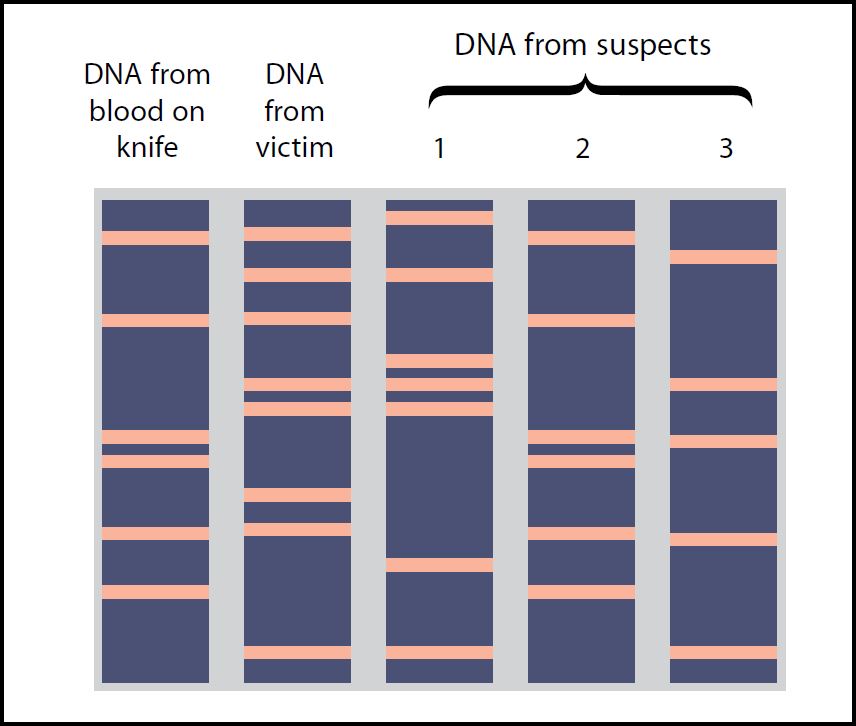Damage to gen X of the pancreatic cell prevents the production of protein X. This causes blood glucose level to increase and cannot be controlled. However, the genetic engineering technique has enabled large-scale production of protein X by the following steps:
(P, Q, R and S are not arranged in the right sequence)

(a) Name protein X.
(b) Use letters P, Q, R and S to show the correct sequence in steps to produce protein X.
(c) Give two reasons why bacteria are commonly used in the genetic engineering technique.
(d) Give two examples of medical products produced by genetic engineering.
(e) In a murder case, a knife with blood stains was found by police at a crime scene. By using DNA extracted from the sample on the knife, DNA profiles of the victim and three suspects were obtained as shown in Figure 1.
 Figure 1
Figure 1
(i) Among the three suspects 1, 2 and 3, who is most likely the murderer? Give reasons.
(ii) Is this DNA profiling technique useful? Why?
(iii) One of the identical twins is found to have committed a crime. Can both of them be distinguished by this DNA profiling technique? Explain.
Answer:
(a) Insulin
(b) Q, R, P, S
(c) 1. Bacteria reproduce rapidly in a short period of time.
(c) 2. Bacteria has plasmids which are easy to manipulate in transferring gene / can carry out self-replication.
(d) Vaccine and growth hormone
(e)(i) Suspect number 2. The arrangement of DNA fragment bands of suspect number 2 matches the DNA arrangement obtained from blood sample on knife.
(e)(ii) Yes, because each individual has a unique set of DNA.
(e)(iii) Cannot. Both their DNA sets consist of the same nucleotide sequences. However, both of them can be identified by the differences in their fingerprint patterns.